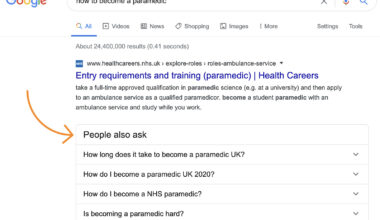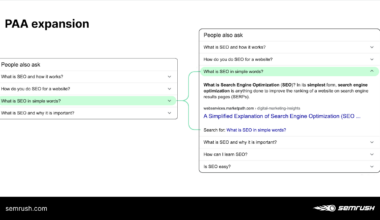Introduction to SEO for Video Marketing
As the world becomes increasingly digital, businesses are beginning to focus more on video marketing to reach their target audience. However, creating a great video is only half the battle; ensuring that your video is discoverable is just as important. This is where Search Engine Optimization (SEO) comes in.
SEO for video marketing involves optimizing your video content to rank higher in search engine results pages (SERPs). By doing so, you increase the likelihood of your target audience discovering your video and engaging with it.
There are several key elements to consider when optimizing your video for SEO. These include keyword research, creating engaging content, optimizing video titles, descriptions, and tags, promoting videos through backlinking and social media, and more.
In order to successfully implement SEO for video marketing, it’s important to understand each of these components and how they work together to improve your video’s discoverability.
Overall, SEO for video marketing is an essential component to any successful video marketing strategy. By taking the time to optimize your videos for search engines, you can increase the likelihood of your target audience discovering your content and engaging with your brand.
Importance of Proper Keyword Research
When it comes to SEO for video marketing, proper keyword research is crucial. Keyword research involves finding the words and phrases that your target audience is using to search for content related to your video.
By identifying the right keywords, you can optimize your video content to rank higher in search engine results pages (SERPs), making it more discoverable to your target audience.
Here are some tips for conducting proper keyword research for your video:
- Start by brainstorming a list of potential keywords that your target audience might use to search for content related to your video.
- Use keyword research tools like Google Keyword Planner, SEMrush, or Ahrefs to identify additional keywords and to see how often these keywords are searched for.
- Consider the search intent behind each keyword. Are people searching for information, products, or services related to your video?
- Focus on long-tail keywords, which are more specific and have less competition. For example, instead of targeting the broad keyword “fitness,” try targeting the long-tail keyword “10-minute at-home workout for beginners.”
- Monitor your keyword rankings regularly and adjust your video content and optimization strategies accordingly.
Proper keyword research not only helps your video rank higher in SERPs, but it also helps you create more targeted and relevant video content that resonates with your audience. By understanding the language and search habits of your target audience, you can create videos that better meet their needs and interests.
In conclusion, keyword research is a critical component of SEO for video marketing. By identifying the right keywords, optimizing your video content accordingly, and monitoring your rankings, you can increase the discoverability of your videos and ultimately drive more engagement and conversions for your business.
Creating Engaging Video Content
When it comes to video marketing, creating engaging video content is key to capturing and retaining your target audience’s attention. Here are some tips for creating engaging video content:
- Know your audience: Before creating your video content, it’s important to understand who your target audience is and what they’re looking for. Think about their interests, pain points, and what type of content they engage with the most.
- Keep it short and sweet: Attention spans are short, so it’s important to get your message across quickly and effectively. Keep your videos between 1-3 minutes, and if you have a lot of information to cover, consider breaking it up into a series of shorter videos.
- Tell a story: People love stories, so consider telling one that relates to your brand or product. This will help your audience connect with your brand on a more emotional level.
- Use visuals and graphics: Visuals and graphics can help break up your video content and make it more engaging. Consider using animations, charts, or other visuals to help illustrate your message.
- Be authentic: Authenticity goes a long way when it comes to video marketing. Be yourself and let your personality shine through in your videos. This will help build trust and credibility with your audience.
- Use humor: Humor is a great way to captivate your audience and keep them engaged. However, be mindful of your brand’s tone and values, and ensure that your humor aligns with them.
By following these tips, you can create video content that is both engaging and effective. Don’t be afraid to experiment with different types of video content and see what resonates best with your audience. Remember, the goal is to create content that not only captures your audience’s attention but also drives engagement and ultimately, conversions for your business.
In conclusion, creating engaging video content is a critical component of video marketing. By understanding your audience, telling a story, using visuals and graphics, being authentic, and using humor, you can create videos that resonate with your target audience and drive results for your business.
Optimizing Video Titles, Descriptions, and Tags
In addition to proper keyword research and engaging video content, optimizing your video titles, descriptions, and tags is crucial for successful SEO in video marketing.
Video Titles:
Your video title should accurately and succinctly describe the content of your video while also including your target keyword. Keep in mind that your title is the first thing people will see when searching for videos, so it’s important to make it attention-grabbing and memorable. Consider using numbers, questions, or emotional language to make your title stand out.
Video Descriptions:
Your video description provides additional context and information about your video. It should include your target keyword, a brief summary of your video’s content, and any relevant links or calls to action. Be sure to make your description easy to read and scannable by using bullet points or numbered lists.
Video Tags:
Video tags help categorize your video and make it more discoverable in search results. Be sure to include relevant tags that relate to your video’s content and target keyword. You can also use tools like YouTube’s Keyword Tool or VidIQ to research and identify popular tags for your video.
When optimizing your video titles, descriptions, and tags, keep in mind that you want to strike a balance between being informative and engaging while also optimizing for search engines. By using relevant keywords and providing valuable information about your video, you can increase the chances of it being discovered and watched by your target audience.
In conclusion, optimizing your video titles, descriptions, and tags is a critical component of SEO in video marketing. By accurately and succinctly describing your video’s content, including relevant keywords, and making it easy to discover through proper tagging, you can improve your video’s visibility and ultimately drive more engagement and conversions for your business.
Promoting Videos Through Backlinking and Social Media
After you have optimized your video for search engines, it’s time to promote it through backlinking and social media. By doing so, you can increase the visibility of your video and drive more traffic to your website or social media channels.
Backlinking:
Backlinking involves getting other websites to link back to your video. When other websites link to your video, it signals to search engines that your video is valuable and relevant. This can help improve your video’s search engine rankings and make it more discoverable to your target audience.
To get backlinks for your video, you can reach out to other websites and ask them to link to your video, or you can create valuable content that other websites will naturally want to link to. For example, you can create a blog post or infographic that features your video content, and then reach out to other websites in your industry to share it.
Social Media:
Social media is another powerful tool for promoting your video content. By sharing your video on social media platforms like Facebook, Twitter, and LinkedIn, you can reach a wider audience and drive more engagement.
When sharing your video on social media, be sure to include a brief description of your video and use relevant hashtags to make it more discoverable. You can also consider running social media ads to promote your video to a targeted audience.
Video embeds:
Embedding your video on your website or blog is another effective way to promote your video and drive more traffic to your website. By embedding your video, you can increase the time visitors spend on your website and improve your website’s search engine rankings.
In conclusion, promoting your video through backlinking and social media is an essential component of video marketing. By getting other websites to link back to your video, sharing your video on social media, and embedding your video on your website, you can increase the visibility of your video and drive more engagement and conversions for your business.
Final Thought: The Ongoing Importance of SEO in Video Marketing
As the digital landscape continues to evolve, video marketing and SEO will remain important components of any successful marketing strategy. With the rise of video-sharing platforms like YouTube and social media sites like Facebook and Instagram, businesses have more opportunities than ever to connect with their target audience through video content.
However, as more businesses begin to invest in video marketing, competition for visibility and engagement will only continue to increase. This is where SEO comes in. By optimizing your video content for search engines, you can increase its discoverability and ensure that it reaches your target audience.
It’s important to remember that SEO for video marketing is an ongoing process. As new trends and technologies emerge, it’s important to continually adapt and refine your video marketing strategy to stay competitive. This includes staying up-to-date on the latest SEO best practices, monitoring your keyword rankings, and experimenting with new types of video content to see what resonates best with your audience.
In conclusion, SEO for video marketing is a critical component of any successful video marketing strategy. By properly researching keywords, creating engaging video content, optimizing your titles, descriptions, and tags, promoting your videos through backlinking and social media, and staying up-to-date on the latest SEO best practices, you can increase the visibility and engagement of your video content and ultimately drive more conversions for your business.






















